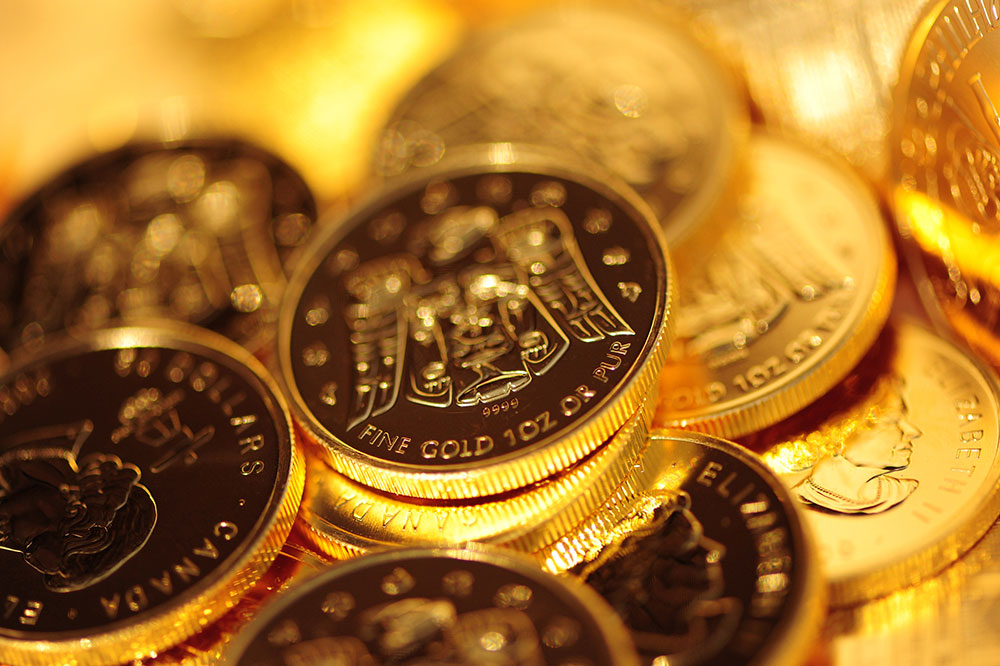
13 common mistakes to avoid while investing in gold
Investing in gold is always a popular choice for those seeking to diversify their portfolios and protect their wealth. Gold’s intrinsic value and lasting significance have made it a coveted asset throughout human history. However, investing in gold can require a little research, especially for those who are new to the world of precious metals. So, here are some common mistakes people make when investing in gold and how to avoid them:
1. Lack of research
One of the most fundamental mistakes investors make is diving into the gold market without sufficient research. Understanding the various forms of gold (bullion, coins, or jewelry), the factors affecting gold prices (supply and demand, economic conditions, and geopolitical events), and the different investment options (physical gold, gold ETFs, and mining stocks) is crucial. Without this knowledge, investors may make uninformed decisions and risk losing money.
2. Failing to set clear goals
Before investing in gold, it is essential to define financial objectives. This can include the preservation of wealth, hedging against inflation, or profit from short-term price fluctuations. Without clear goals, one may make impulsive decisions and find it challenging to determine when to buy or sell gold.
3. Ignoring transaction costs
Investors often overlook transaction costs, such as premiums on physical gold or fees associated with buying and selling gold-related assets. These costs can significantly impact the overall returns, so one should factor them into the investment strategy.
4. Over-allocating
While gold can be a valuable addition to the investment portfolio, it is unwise to over-allocate. Diversification is key to managing risk, and putting too much capital into a single asset class can expose one to undue risk. Here, allocating only a portion of the portfolio to gold, typically ranging from 5% to 15%, depending on risk tolerance and financial goals, can be a safer bet.
5. Impulsive buying and selling
Emotions can play a significant role in gold investment decisions. Many investors panic during market downturns and sell their gold assets at the wrong time, only to regret it when prices rebound. One can avoid impulsive actions by sticking to the predetermined investment strategies and long-term goals.
6. Neglecting storage and security
If one chooses to invest in physical gold, taking proper storage and security measures is essential. Here, keeping the gold at home may expose it to theft or damage. Alternatively, storing it in a bank’s safe deposit box can come with costs and limitations. In cases like these, one can explore secure storage options like private vaults or dedicated storage facilities to protect their investment.
7. Disregarding tax implications
Investors often overlook the tax implications of their investments. Depending on the location and the form of gold one owns, they may be subject to capital gains taxes when selling. So, one should consult a tax advisor to understand the tax treatment of gold investments and plan accordingly.
8. Falling for hype
Gold markets are susceptible to hype and speculative bubbles. Some investors are drawn to gold during times of heightened uncertainty or when it garners significant media attention. However, investment decisions based solely on hype may lead to poor outcomes. So, it is important to focus on long-term strategies and avoid succumbing to market noise.
9. Neglecting to rebalance
As the value of gold holdings can fluctuate over time, it is essential to periodically rebalance the portfolio to maintain desired asset allocation. Here, rebalancing ensures that investors stay on track with their investment objectives and prevent over-prioritizing any single asset class.
10. Falling for scams
The market for counterfeit gold products is a real concern. Investors must be vigilant and purchase gold from reputable sources. Additionally, they should verify the authenticity of gold investments by working with trusted dealers and obtaining appropriate certification when applicable.
11. Timing the market incorrectly
Timing the gold market can be tricky. Many attempt to predict short-term price movements, hoping to buy at low prices and sell at high. However, trying to time the market accurately is a challenging task, even for seasoned professionals. This is why investors may end up buying gold at a high price during periods of hype and selling when prices drop, resulting in losses. So, instead of trying to time the market, one must focus on long-term investment strategies that align with their financial goals and risk tolerance.
12. Overlooking currency risk
Gold is priced in dollars (USD) on global markets, which means that if one invests in gold from a currency other than USD, one can be exposed to currency risk. This is because fluctuations in exchange rates can significantly impact the value of one’s gold investments when translated back into one’s local currency. So, it is crucial to consider the currency risk associated with gold and how it may affect the overall investment returns. Hedging strategies or diversifying into gold assets denominated in home currency can help mitigate this risk.
13. Not considering external factors
The price of gold is influenced by various geopolitical and economic factors, including inflation, interest rates, currency movements, and global political stability. Some investors make the mistake of underestimating the impact of these external factors on gold prices. For instance, failing to stay informed about global events and their potential influence on the gold market can lead to missed opportunities or unexpected losses. So, one should keep a close eye on economic indicators and geopolitical developments to make informed investment decisions in the gold market.
Investing in gold can be a valuable addition to the financial portfolio. They can act as tangible assets that carry intrinsic value. While most investments are not free from risks, by avoiding the above-mentioned common mistakes when investing in gold, one can harness its true benefits.


